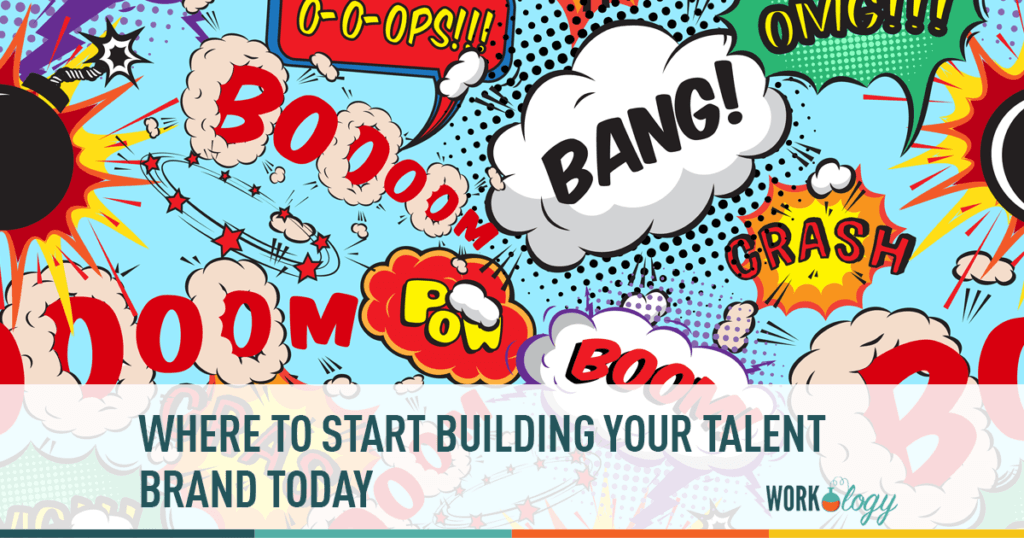Why do you need a talent brand? Because measuring, monitoring and improving an organization’s reputation is becoming a crucial component of talent acquisition strategies for any company in today’s labtor market. Your talent band exists with or without actively managing it. It includes the perceptions of prospective, current, and previous employees and it influences whether or not people choose to apply for, accept offers from, and stay at your organization.
According to Glassdoor, “76% of job seekers want details on what makes the company an attractive place to work.” Public information influences whether or not candidates apply (applicant quality), engage with recruiters (candidate pipeline), and accept offers (quality of hire). The same Glassdoor study reports that “69% are likely to apply to a job if the employer actively manages its employer brand (e.g., responds to reviews, updates their profile, shares updates on the culture and work environment).
Where to Start Today Building Your Talent Brand?
Whether you’re a one-person HR department or working for a larger company, the best place to begin is with a talent brand audit. Conduct a self-assessment for your company by asking the following five questions:
Is your career site user-friendly?
This doesn’t just mean accessible; it means you’ve taken the time to test your own apply process to make sure every element and question is clear and the next steps are actionable. Applicants should also be made aware of the next steps in the process. Additionally, because many job seekers are applying via mobile, you should ensure that your site is responsive and test it on multiple mobile platforms. The most important feature of your career site is your job postings. Are they clear and complete? Error free? Easy to understand? Whether they live only on your career site, or on LinkedIn or a job posting site like Indeed and redirect to your career site, your job postings are often the first point of contact for a candidate and they should reflect your company culture and leave no questions about the role. (The same goes for your job titles.)
What differentiates your company from its competitors?
Your career site should include benefits, perks, company culture, and other elements that make your company unique. Videos and visuals are great for showcasing your company culture, employee testimonials, and even a 360-degree tour of your office. In a zero unemployment economy, it’s imperative that you find and focus on what makes your company attractive to candidates. Your current employees are a great resource; consider sending a survey asking what you do well with regards to perks and culture, and what you might change or add.
Do you read (and respond to) your company reviews?
This includes Glassdoor, Google, and other employee review sites. While it’s tempting to write off a bad review, especially the anonymous ones, as ramblings from a disgruntled former employee, potential candidates are reading too. Responding to both negative and positive reviews in a professional manner shows that your company genuinely cares about cultivating and retaining talent.
How do you use your social channels? (And how do you measure success on social channels?)
With 76% of all U.S. Internet users on social media (Pew, 2015), and 92% of employers using social media (The Muse), social channels are low-cost and necessary channels for amplifying your brand. LinkedIn is a given for anyone hiring in today’s marketplace. With more than 6.5 million jobs posted and 500 million members, nearly 90% of recruiters report using LinkedIn to attract and source candidates.Regular content, co- branded profiles and featured (paid) jobs on LinkedIn could go a long way to provide candidates information about your organization and drive qualified traffic back to your career site. Instagram is a great tool for showcasing company culture. Facebook, especially Facebook Live video, can also give potential candidates insight on what it’s like to work for your company.
Ask questions to engage candidates, create a unique Instagram hashtag and encourage current employees to use it when sharing workplace photos, and tap your existing talent to share their expertise in articles on LinkedIn showcase pages.
Is your ATS integrated and optimized with your career site?
Your applicant tracking system provides an online repository for storing candidate application data while also allowing you to electronically maintain candidate records and information. The ATS helps make the online application process and candidate experience easier to manage, and the technology is now affordable for any size company. It also gives you access to reporting and hiring metrics including applications by position, source of hire, and candidate quality data. Recruiting technology has come a long way in the past decade and there’s no excuse not to take advantage of its benefits.
This list is just to get you started; there are many other factors to consider, including competitor analysis, where the best candidates go for research, KPIs, content and social strategy, SEO and Google Analytics.










One Comment
Love the article Jessica! I registered for your webinar too.
Comments are closed.